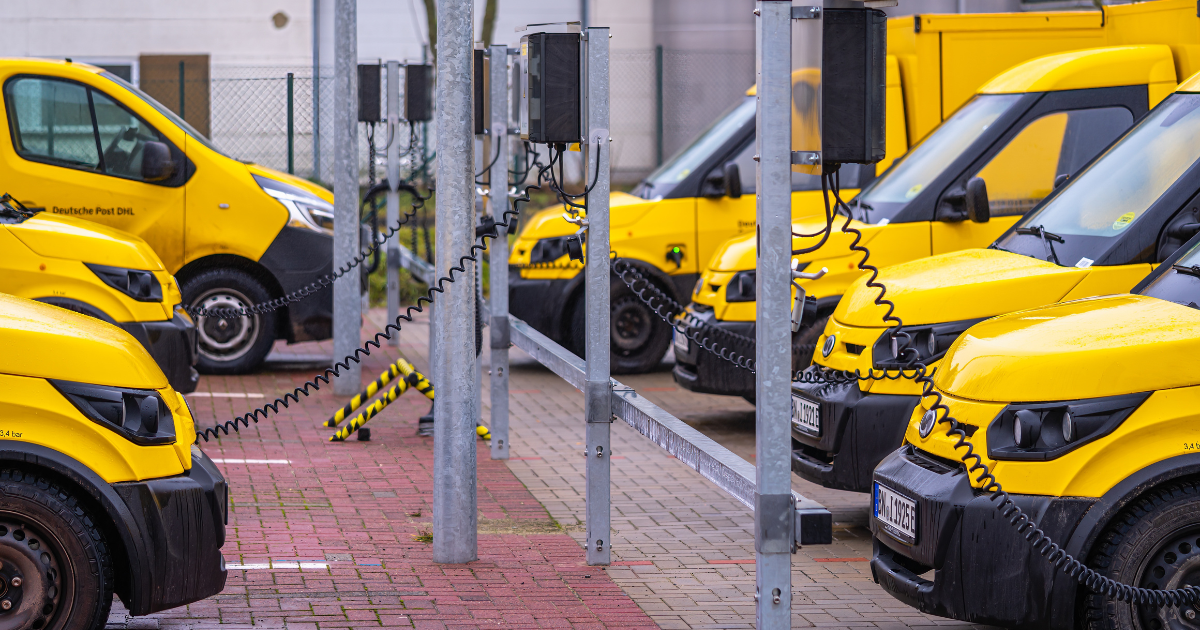ロジスティクスの未来を形作る重要なトレンドをのぞいてみましょう

新型コロナウイルスは、テクノロジーの活用を加速させ、多くの分野でイノベーションを引き起こしました。この数年間、一連のブラックスワンにより、業界はすぐに適応することを余儀なくされ、ロジスティクス オペレーションの可視化の重要性がさらに高まり、サプライ チェーンを改善する原動力になりました。
「パンデミックの影響の ひとつとして、ロジスティクス業界の優先事項は、サプライ チェーンのレジリエンスを確保するために、サプライ チェーンにおける俊敏性を向上させることです」と、DHL Customer Solution and Innovation (CSI) のイノベーションおよびトレンド リサーチ担当バイスプレジデントである Klaus Dohrmann 博士は述べています。
業界が前例のないスピードで進歩しているため、ロジスティクスのリーダーは、トレンドを取り入れて将来への計画に対し正しい決定を下しながら、業務を継続して配送を遂行するための持続可能な方法を見つける必要があります。特にいくつかの重要なトレンドは、近い将来のロジスティクス産業の成長に、決定的かつ直接的な影響を与えています。
レジリエンスに向けた多様化
パンデミックとロックダウンの発生によるサプライ チェーンへの影響は、企業に警鐘を鳴らしました。過去 2 年間、部品の輸送を制限するロックダウンにより、さまざまなセクターが影響を受けてきました。特に半導体産業において顕著であり、国境封鎖に続いて世界的に膨大な品不足が発生し、半導体に依存するサプライチェーンに大規模な混乱をもたらしました。
それどころかパンデミックは 、サプライチェーンの多様化への動きを加速させました。感染拡大の初期段階では、中国、日本、韓国などあらゆる半導体産業の主要国が閉鎖されました。これにより、ベトナム など急速に成長しているチップ製造部門などの代替調達につながり、世界的な半導体不足の流れを変えました。
しかし、サプライ チェーンの多様化への道のりは長期的なものになるでしょう。より多くの工場とサプライ チェーン ネットワークが消費者の近くに分散して構築されていますが、その影響はこれらの施設が 5 ~ 10 年以内に稼働して初めて明らかになるでしょう。
ロジスティクスのグリーン化
国連によって 気候変動対策 の年に指定された2022年は、世界的な関心事としてサステナビリティに引き続き注目が集まっています。Eコマースブームによる二酸化炭素排出量の増加と、サステナビリティに対するの消費者の関心の高まりに対処するために、多くの主要ブランドは 次世代のパッケージ で脱炭素と 循環性 に向けた措置を講じています。
- RFIDを含む固有のチップを搭載した次世代のパッケージングユニットは、ユニット数や場所などの情報を処理するポートによって読み取られます。
2022年は、ヨーロッパでも戦争が発生し、エネルギー危機が引き起こされ、エネルギー価格が高く不安定なために家庭や企業が打撃を受けました。国際環境機関の World Energy Outlook 2022 レポートによりますと、これにより各国は化石燃料から再生可能で無尽蔵のエネルギー源 への迅速な移行を計画し始めるようになりました。企業はまた、風力、水力、地熱、バイオマスに依存する太陽エネルギーやその他のエネルギー源を利用または貯蔵するインフラへの投資を開始しています。
「世界の CO2 排出量の大部分は物流と輸送によるものです」と Dohrmann 博士は述べています。「これは、代替エネルギーソリューションが脱炭素化の鍵であることを意味し、それには持続可能な燃料の使用や車両の電動化も含まれます。」
- DHLエクスプレスは、世界中に電気自動車を追加配備しています。
多くの国がモビリティの脱炭素化 に取り組む中、シンガポールやタイなど東南アジア諸国はEV の拡大・普及 に向けて断固たる行動を起こしています。調査会社のCanalysによりますと 650万台のEV が販売され、2020年の2倍以上になりました。企業はまた、ロジスティクスと輸送のニーズを持続的に処理するために、電気自動車や電機飛行機の購入を開始しています。
データがカギ
サプライチェーンが不安定になったことで、過去のパターンを明らかにするデータの重要性が再認識されました。
そのため、ここ数年ビッグデータ解析 が様々な産業で広く行われるようになりました。その世界市場規模は急激に成長しており、 2021年の1,626億ドルから2026年には2,734億ドルに成長 すると予測されています。
「サプライチェーンの回復とともにサプライチェーンの可視化が主役になります」 とDohrmann博士は述べています。「これはモノのインターネットデバイスを使用してデータを収集し、そのデータを活用してサプライチェーンの見通しと洞察を得ることが、これまで以上に重要になっています。」
ロジスティクス産業が猛スピードで変化する中、企業は過去のパターンと現状の変化をリアルタイムで明らかにし、将来の予測を立てるための強力なデータ システムを必要としています。
サプライチェーン全体の可視性を向上させるために、物流企業はセンサー、ダッシュボード、およびその他のデータ収集デバイスとテクノロジーを採用して、構造化データと非構造化データの両方のストリームを利用します。適切なデータを収集して活用し、物流企業が可視性を高めることで、サプライ チェーンセグメントに沿って最適化された戦略を展開できるため、サービス レベルが向上します。
ビッグデータ分析はロジスティクス業界に十分に浸透しており、今後 5 年以内に業界のビジネススタンダードになるでしょう。
マンパワーを拡大させる装置
技術の進歩によって従業員の健康と安全も改善され、多くの企業が従業員の健康維持をサポートする ウエラブルセンサー に投資しています。作業員が負担や疲労を軽減して重い貨物を持ち上げることができるようにする外骨格型装置 も負傷のリスクを低下させます。
- 外骨格型装置を身に着け、重い貨物を持ち上げる作業員
「ロジスティクスは人によるビジネスであり、当社の従業員はお客様の利益のために世界中でロジスティクスオペレーションを遂行しています」と Dohrmann 博士は述べています。「そのため、彼らの健康を守るために、職場環境をより安全にし、仕事への負担を少なくするために、私たちができる支援に投資することが重要です。」
自動化と人工知能は、手作業を拡張することで、労働力に革命を起こそうとしています。ヒトと自動化のコラボレーションにより、ヒトの仕事の範囲が、集中的ではなくより高度なスキルのタスクに活用できます。例えば、倉庫内の在庫の仕分けと輸送を補助する屋内型の移動ロボット が増えることで、作業員は運用の管理、フローの調整、ロボットの修正、および例外的で困難な注文の処理などにおいて、より責任を負うことができるようになります。
最近の出来事が示すように、ロジスティクス企業は、サプライ チェーンの将来性を保証するために、迅速に適応し、迅速に行動する必要があります。プロアクティブな思考で将来の傾向を予測することで、業界は回復力と俊敏性を向上させ、混乱やブラックスワンなどに備えることができるでしょう。












 日本語
日本語